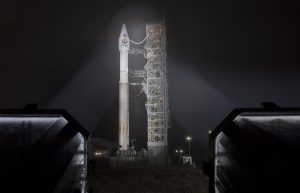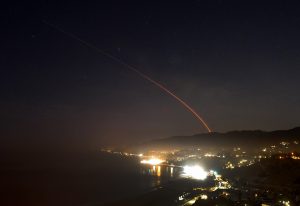
Vandenberg Air Force Base, California, May 5 (EFE).- NASA has moved a step closer to learning about the interior of the neighboring planet of Mars with the successful lift-off here at 4.05 am (1105 GMT) Saturday of a new probe.
The new InSight (Interior Exploration using Seismic Investigations, Geodesy and Heat Transport) probe was launched on a United Launch Alliance Atlas V 401 rocket from Vandenberg Air Force Base for a six-month journey to the red planet, located at an average distance of 225 million kilometers (140 million miles) from Earth.
If the probe can slow down sufficiently and make a successful touchdown in late November, its mission will be to map Mars’ depths and allow scientists to broaden their understanding of how it and other rocky planets, like Earth, were formed more than 4 billion years ago.
The lander has two main observational tools: a suite of seismometers that will feel for tremors (so-called “Mars quakes”) and provide information that scientists can use to determine how the planet’s core, mantle and crust is layered; and a heat-transfer probe that will burrow five meters (16 feet) beneath Mars’ surface to measure the heat flowing out of the planet’s interior.

It marks the first time a space mission has the lone objective of analyzing the interior of Mars, the second-smallest planet in the Solar System after Mercury.
Previous missions to Mars have captured images of its surface, studying rocks, digging into its soil and looking for evidence of the liquid water that once flowed there.
“Ninety-nine-point-nine percent of this planet has never been observed before,” Bruce Banerdt, InSight’s main investigator, told reporters prior to the launch. “And we’re going to go and observe it with our seismometer and with our heat flow probe for the very first time.”
The launch was originally to have taken place in March 2016, but a delay occurred due to a leak in the suite of seismometers’ vacuum container.
Because the two planets align favorably just once every 26 months, the launch had to be pushed back until May 2018.
The mission, which will last nearly two years, is being largely financed and coordinated by the United States, although several European countries – primarily Germany and France, but also Spain and other nations – also have made key contributions.
